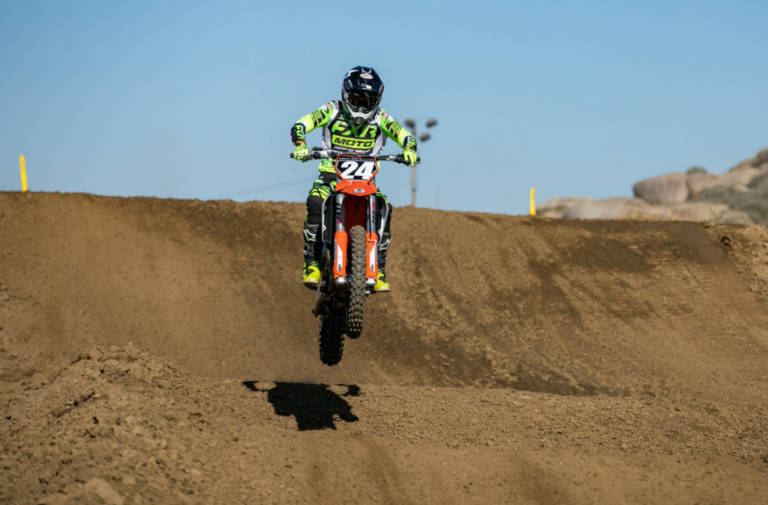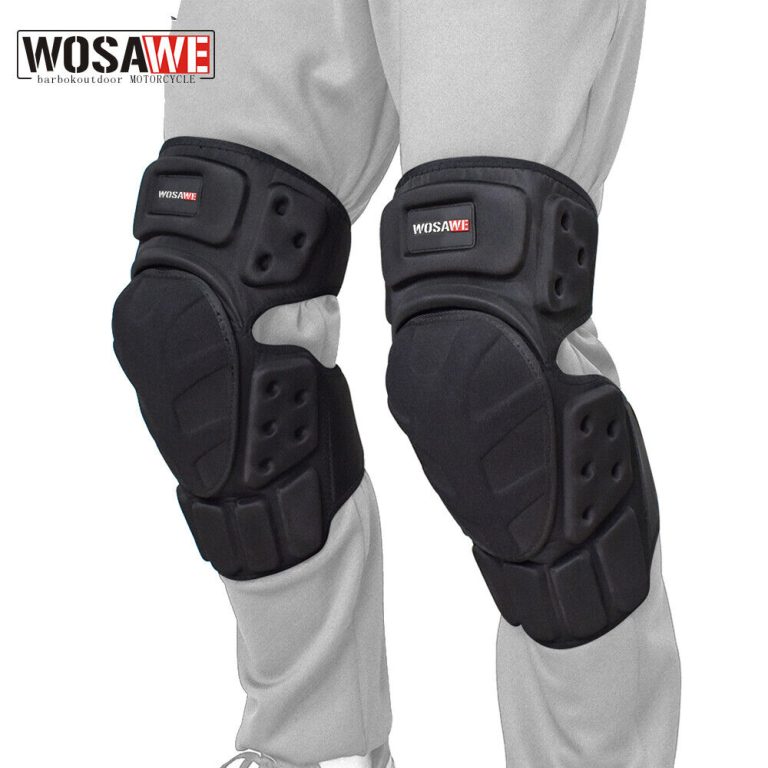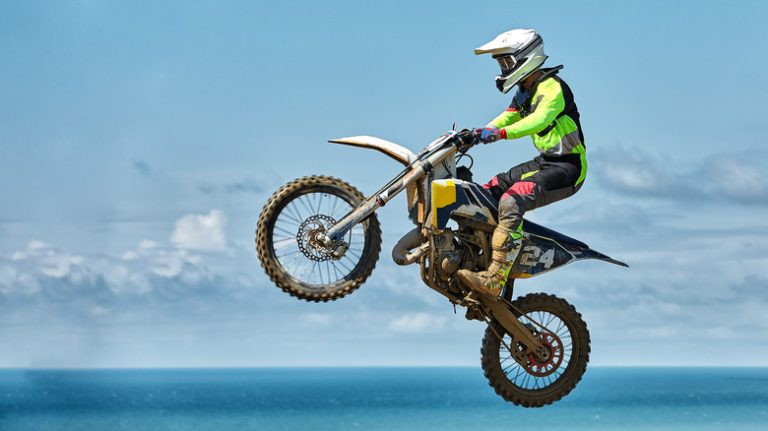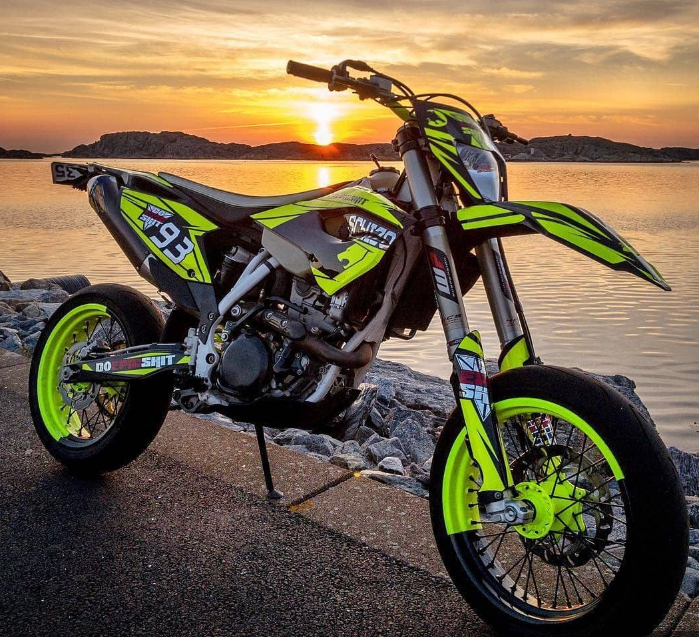The History and Evolution of Dirt Bikes
Dirt bikes, the rugged off-road motorcycles designed for traversing rough terrain, have a rich and fascinating history that spans over a century. These versatile machines have evolved from early motorized bicycles into highly specialized vehicles capable of tackling the most challenging landscapes. This article will explore the origins and development of dirt bikes, tracing their journey from primitive prototypes to the advanced machines we see today. We’ll examine key milestones, influential figures, technological innovations, and the impact of competitions on dirt bike evolution.
The story of dirt bikes begins with the invention of the motorcycle itself. In the late 19th century, inventors began attaching small engines to bicycle frames, creating the first motorized two-wheelers. These early motorcycles were primarily designed for road use, but it wasn’t long before riders began venturing off the beaten path. As motorcycles became more powerful and reliable, enthusiasts started exploring unpaved roads and trails, laying the groundwork for the development of specialized off-road machines.
Early History of Motorcycles

Invention of the Motorcycle
The motorcycle’s invention is attributed to several pioneers who experimented with motorized bicycles in the late 1800s. Gottlieb Daimler and Wilhelm Maybach created the first gasoline-powered motorcycle in 1885. Their Reitwagen (riding car) featured a wooden frame and iron-banded wooden wheels. In 1894, Hildebrand & Wolfmüller became the first series production motorcycle, marking the beginning of the motorcycle industry.
Transition to Off-Road Motorcycles
As motorcycles gained popularity in the early 20th century, riders began exploring their capabilities beyond paved roads. The transition to off-road motorcycles was gradual, with early adventurers modifying existing road bikes for rough terrain use. These modifications often included:
- Increased ground clearance
- Knobby tires for better traction
- Reinforced frames to withstand impacts
- Modified gearing for improved low-speed performance
The Birth of Dirt Bikes

Pre-World War II Era
The 1920s and 1930s saw the emergence of purpose-built off-road motorcycles. Manufacturers like BSA and Triumph in the UK began producing lightweight, agile bikes suitable for off-road use. These early dirt bikes were often used in reliability trials, which tested both rider skill and machine durability over long distances and challenging terrain.
Post-World War II Developments
After World War II, technological advancements in motorcycle design accelerated the development of specialized off-road bikes. The sport of motocross emerged in Europe, particularly in the Netherlands and Belgium, driving demand for more capable dirt bikes. Manufacturers began producing machines specifically designed for off-road competition, featuring:
- Lighter frames
- More powerful engines
- Improved suspension systems
- Enhanced durability for rough terrain
| Era | Development | Impact |
| Late 1800s | Invention of the motorcycle | Laid foundation for all motorized two-wheelers |
| 1920s-1930s | First purpose-built off-road motorcycles | Enabled exploration of rough terrain |
| Post-WWII | Emergence of motocross in Europe | Drove demand for specialized off-road bikes |
Key Milestones in Dirt Bike Evolution

1940s and 1950s
The post-war period saw significant advancements in dirt bike design. Manufacturers like BSA and Husqvarna introduced lightweight, agile bikes specifically for off-road use. These machines featured:
- Smaller displacement engines (typically 125-250cc)
- Improved suspension systems
- Lighter frames for better maneuverability
1960s
The 1960s marked a turning point in dirt bike history with the rise of Japanese manufacturers. Companies like Yamaha, Honda, and Suzuki entered the market with innovative designs and mass-production capabilities. This decade also saw the growth of motocross and enduro sports, further driving dirt bike development.
1970s
The 1970s brought significant improvements in suspension technology. Long-travel suspension systems were introduced, dramatically improving ride quality and handling on rough terrain. This decade also saw the popularization of motocross in the United States, leading to increased investment in dirt bike technology.
1980s
Technological innovations continued in the 1980s, with the introduction of mono-shock rear suspension systems. This design improved handling and reduced weight compared to dual-shock setups. The 1980s also saw an expansion of dirt bike models and categories, catering to a wider range of riders and disciplines.
1990s to Present
Recent decades have seen advances in engine technology, materials science, and electronic systems. Four-stroke engines have become increasingly popular, offering improved fuel efficiency and lower emissions. Modern dirt bikes feature:
- Lightweight materials like aluminum and carbon fiber
- Advanced fuel injection systems
- Sophisticated suspension technology
- Electronic rider aids (e.g., traction control, launch control)
Influential Figures in Dirt Bike History

Soichiro Honda
Soichiro Honda, founder of Honda Motor Company, played a crucial role in the development of dirt bikes. Honda’s contributions include:
- Introducing affordable, reliable motorcycles to the mass market
- Investing heavily in off-road motorcycle technology
- Pioneering innovations like the mono-shock rear suspension
Edison Dye
Edison Dye is often called the “Father of American Motocross.” His contributions to dirt bike history include:
- Introducing European motocross to the United States in the late 1960s
- Organizing the first professional motocross series in America
- Helping to establish motocross as a popular spectator sport
Dirt Bike Competitions and Their Impact
Early Competitions
The origins of motocross and enduro racing can be traced back to the early 20th century. Key early events include:
- The Scottish Six Days Trial (established in 1909)
- The International Six Days Trial (now known as the International Six Days Enduro)
- Early motocross races in Europe in the 1920s and 1930s
These competitions drove the development of more capable off-road motorcycles and helped establish dirt biking as a distinct discipline within motorcycling.
Modern Competitions
Today, dirt bike competitions span various disciplines and attract global audiences. Prominent events include:
- FIM Motocross World Championship
- AMA Supercross Championship
- Dakar Rally
- Red Bull Hard Enduro World Series
These competitions continue to influence dirt bike development, pushing manufacturers to innovate and improve their machines constantly.
Technological Innovations in Dirt Bikes
Suspension Systems
The evolution of suspension systems has been crucial to dirt bike performance. Key developments include:
- Introduction of telescopic forks in the 1940s
- Long-travel suspension in the 1970s
- Mono-shock rear suspension in the 1980s
- Advanced air forks and electronically adjustable suspension in recent years
Engine Development
Engine technology has progressed significantly since the early days of dirt bikes:
- Transition from two-stroke to four-stroke engines
- Introduction of fuel injection systems
- Advancements in materials and manufacturing techniques
- Improved emissions control to meet stricter environmental regulations
Frame and Material Advances
Changes in frame design and materials have led to lighter, stronger dirt bikes:
- Transition from steel to aluminum frames
- Use of exotic materials like titanium and carbon fiber
- Improved frame geometry for better handling and rider ergonomics
| Innovation | Era Introduced | Benefits |
| Long-travel suspension | 1970s | Improved ride quality and handling on rough terrain |
| Mono-shock rear suspension | 1980s | Better handling, reduced weight |
| Four-stroke engines | 1990s-2000s | Improved fuel efficiency, lower emissions |
| Fuel injection | 2000s | Better performance, easier starting, improved fuel economy |
The Global Influence of Dirt Bikes
Popularity in Different Regions
Dirt bikes have gained popularity worldwide, with significant markets in:
- North America
- Europe
- Australia
- Japan
- South America
The cultural impact of dirt biking varies by region, influencing local motorsports scenes, recreational activities, and even transportation in some rural areas.
Future Trends
The future of dirt bikes is likely to be shaped by several factors:
- Increasing focus on electric powertrains
- Advanced materials for lighter, stronger bikes
- Integration of smart technology and connectivity features
- Growing popularity of adventure riding and dual-sport bikes
Best Trail Dirt Bike
When it comes to trail riding, the best dirt bike strikes a balance between performance, comfort, and versatility. The Honda CRF450X is often cited as one of the best trail dirt bikes available. It features a powerful yet manageable 450cc engine, excellent suspension for rough terrain, and a wide-ratio six-speed transmission suitable for various trail conditions. The CRF450X’s reliability and ease of maintenance make it an ideal choice for long trail rides and multi-day adventures.
Conclusion
The history and evolution of dirt bikes is a testament to human ingenuity and the pursuit of off-road adventure. From their humble beginnings as modified road motorcycles to the highly specialized machines of today, dirt bikes have come a long way. Technological innovations, competitive racing, and the passion of riders and engineers have driven this evolution, resulting in bikes capable of tackling the most challenging terrain.
As we look to the future, dirt bikes will likely continue to evolve, incorporating new technologies and adapting to changing environmental regulations. However, the core appeal of dirt biking – the thrill of off-road exploration and the challenge of mastering difficult terrain – will undoubtedly remain. The dirt bike’s journey from a niche hobby to a global phenomenon highlights its enduring appeal and significance in modern motorsports and recreational culture.

Jason Wilkins began his career with a passion for online shopping experiences and deep insights into the outdoor gear market. With the aim of providing excellent choices for those who love an active lifestyle, he established besttraildirtbike.com, specializing in advising and selling Amazon Affiliate products suitable for dirt bikes, accessories, and touring gear.
Leveraging his expertise in SEO techniques and business management skills, Jason has built a reputable brand, attracting thousands of customers. As a dedicated and creative leader, he continuously seeks ways to enhance the user experience and sustainably grow the business.
Jason has in-depth knowledge of dirt bike trends and accessory innovations, constantly updating himself on the latest breakthroughs in this field. On his website, he shares detailed and objective reviews of hot products on the market, along with tips for safe dirt biking and touring.
With the motto “Passion Without Limits,” Jason aspires to inspire many outdoor enthusiasts to explore the wonders of nature. Under his guidance, besttraildirtbike.com is steadily becoming a trusted destination for customers to find quality products for their dirt biking and adventure touring pursuits.








Fascinating read on the history of dirt bikes! It’s amazing to see how they evolved from modified street motorcycles to purpose-built off-road machines. The impact of motocross racing on their development is particularly interesting. I love how innovations like long-travel suspension and lightweight frames have made modern dirt bikes so capable. As an enthusiast, I’m excited to see what new technologies will shape the future of dirt biking. Thanks for sharing this informative overview of dirt bike evolution!
Thank you for your enthusiastic comment, Jack! We’re glad you found the article on dirt bike history fascinating. You’re absolutely right about the remarkable evolution from modified street bikes to specialized off-road machines. The influence of motocross racing has indeed been pivotal in driving innovation.
Your appreciation for the technological advancements like long-travel suspension and lightweight frames is spot-on. These improvements have truly transformed the capabilities of modern dirt bikes, making them more versatile and enjoyable for riders of all levels.
As for the future of dirt biking, it’s an exciting time indeed! We’re seeing interesting developments in electric dirt bikes, improved suspension systems, and even more lightweight materials. Who knows what other innovations are on the horizon?
We share your enthusiasm for the sport and its continuing evolution. Thanks for being part of our community of dirt bike enthusiasts!
This article offers a great overview of dirt bike evolution! I’m impressed by how quickly the technology advanced, especially in the post-war era. The transition from European dominance to Japanese innovation is a fascinating aspect of the story. It’s cool to see how rider demands and competitive racing shaped the development of these machines. I wonder what the next big innovation in dirt bikes will be?
Hi Chloe,
Thank you for your thoughtful comment! I’m glad you enjoyed the overview of dirt bike evolution. The rapid technological advancements indeed reflect the exciting history of these machines. The shift from European to Japanese dominance was a pivotal moment, and it’s fascinating how rider demands and racing have driven innovation.
As for the next big innovation, we’re likely to see continued advancements in electric dirt bikes. With improvements in battery technology, electric bikes are becoming more viable for off-road use, offering quieter and more environmentally friendly alternatives. Additionally, advancements in smart technology, such as integrated GPS systems and performance monitoring, could further enhance the riding experience.
It’s an exciting time for dirt bike enthusiasts, and I look forward to seeing how these innovations unfold. If you have more questions or thoughts, feel free to share!
What a fascinating read on the history of dirt bikes! The article does an excellent job of tracing the development from early models to modern machines. I was particularly intrigued by the evolution of suspension systems over the decades. Are there any specific technological advancements that you think have had the most impact on dirt bike performance? Also, how did the design changes influence riding techniques?
Hi Alex,
I’m glad you enjoyed the article on the history of dirt bikes! The evolution of suspension systems is indeed a fascinating topic. Among the technological advancements, the development of long-travel suspension and adjustable components have had a significant impact on dirt bike performance. These advancements have improved shock absorption and handling, allowing riders to tackle rougher terrain with greater control and comfort.
Additionally, the introduction of hydraulic damping systems and progressive spring rates has greatly enhanced the overall riding experience. These technologies have enabled better customization for different riding styles and conditions, leading to more precise handling and increased stability.
As for design changes influencing riding techniques, advancements in suspension and frame geometry have led to more aggressive riding styles and improved maneuverability. Riders can now take on steeper inclines, sharper turns, and more technical obstacles with greater ease.
If you have any more questions or need further details, feel free to ask!
Great overview of dirt bike history! The progression from basic models to advanced machines is truly impressive. I especially enjoyed the section on how competition has driven innovation. Could you delve more into how the rise of motocross influenced dirt bike design? Additionally, how have changes in engine technology shaped the evolution of dirt bikes?
Hi Emily,
Thank you for your kind words! I’m glad you enjoyed the overview of dirt bike history. The rise of motocross has had a profound influence on dirt bike design. Motocross competitions pushed manufacturers to focus on enhancing performance, durability, and handling. Features such as advanced suspension systems, lighter frames, and improved ergonomics were developed to meet the demands of rough tracks and high-speed racing.
Regarding engine technology, innovations have significantly shaped dirt bike evolution. Early models had simple, air-cooled engines with minimal power output. As technology progressed, liquid-cooled engines became standard, offering better performance and reliability. The introduction of fuel injection and electronic control systems has further improved efficiency, power delivery, and overall rideability. These advancements have allowed modern dirt bikes to achieve higher levels of performance and adaptability in various riding conditions.
If you have any more questions or need further details, feel free to ask!
This article provides a comprehensive look at the evolution of dirt bikes. The detailed timeline of technological advancements was particularly insightful. I’m curious, what were some of the key challenges faced by manufacturers in the early days? Also, how did the introduction of electronic systems impact dirt bike performance and reliability?
Hi ulyssesisrael,
Thank you for your thoughtful comment! In the early days of dirt bike manufacturing, one of the key challenges was durability. Early models often struggled with reliability due to the rugged conditions they were designed for. Manufacturers had to develop more robust materials and design improvements to withstand the harsh terrains and impacts associated with off-road riding.
The introduction of electronic systems brought significant advancements to dirt bike performance and reliability. Electronic ignition systems, for example, improved starting reliability and engine performance by providing more precise timing. Additionally, the development of electronic fuel injection (EFI) systems enhanced fuel efficiency and throttle response while reducing emissions. These advancements made dirt bikes not only more powerful but also more dependable and easier to maintain.
Thank.
I enjoyed reading about the history and evolution of dirt bikes. The discussion on how design changes have improved durability and performance was eye-opening. Can you provide more information on the role of international competitions in driving innovations in dirt bike technology? Additionally, how have rider preferences influenced the evolution of bike designs?
Hi Ava Smith’s!
International competitions have played a significant role in driving innovations in dirt bike technology. Events like the FIM Motocross World Championship and the Dakar Rally have pushed manufacturers to enhance bike performance, durability, and handling to meet the demands of these rigorous competitions. Innovations such as advanced suspension systems, lightweight materials, and engine improvements often stem from the need to excel in these competitive environments.
Rider preferences have also heavily influenced bike designs. As the sport grew, riders began seeking bikes that catered to specific styles and terrains. This demand led to the development of specialized models, like motocross and enduro bikes, with features tailored to different types of off-road riding. Manufacturers continuously adapt to these preferences, ensuring that modern dirt bikes align with both competitive and recreational needs.
Thank.
Hi Ava Smith’s!
International competitions have played a significant role in driving innovations in dirt bike technology. Events like the FIM Motocross World Championship and the Dakar Rally have pushed manufacturers to enhance bike performance, durability, and handling to meet the demands of these rigorous competitions. Innovations such as advanced suspension systems, lightweight materials, and engine improvements often stem from the need to excel in these competitive environments. Rider preferences have also heavily influenced bike designs. As the sport grew, riders began seeking bikes that catered to specific styles and terrains. This demand led to the development of specialized models, like motocross and enduro bikes, with features tailored to different types of off-road riding. Manufacturers continuously adapt to these preferences, ensuring that modern dirt bikes align with both competitive and recreational needs.
Thank.